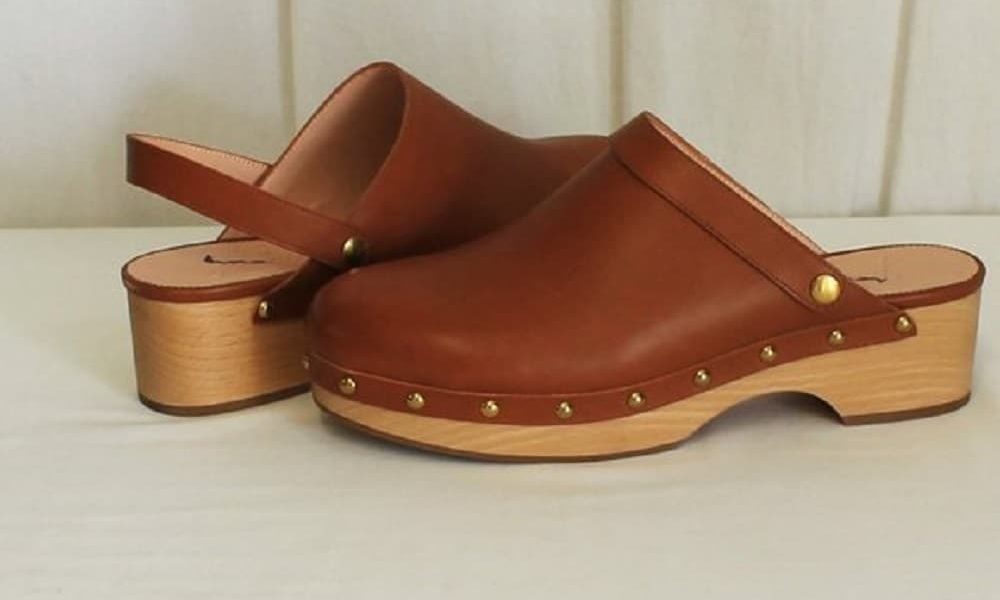Upcycling is more than just a trendy DIY movement—it’s a sustainable way to give new life to items that might otherwise be discarded. At its core, upcycling transforms old, unused, or worn-out materials into something functional and beautiful. One of the best examples of this is repurposing old sweaters into cozy throw pillows and blankets. Whether you’re holding onto sweaters that no longer fit, have sentimental value, or have simply gone out of style, these beloved garments can find a second life as unique and charming home decor pieces.
Turning old sweaters into throw pillows and blankets not only helps reduce textile waste but also allows you to create soft, warm additions to your living space. These DIY projects are perfect for both beginners and experienced crafters alike, as they are easy to customize and require minimal tools. Plus, using recycled materials means you’re saving money while contributing to a more eco-conscious lifestyle.
In this guide, we’ll walk you through the step-by-step process of transforming your old sweaters into beautiful throw pillows and blankets. From choosing the right materials to adding personal touches, you’ll learn how to create one-of-a-kind pieces that are not only practical but also full of character. Whether you’re looking to refresh your home decor or give meaningful handmade gifts, upcycling old sweaters is a creative and fulfilling way to do it.
Upcycling Old Sweaters: Step-by-Step Guide for Beginners
Upcycling has become a trendy and eco-conscious way to breathe new life into old, unused materials. Instead of discarding items that no longer serve their original purpose, upcycling transforms them into something new, stylish, and functional. One of the most fun and creative ways to start upcycling is by using old sweaters to make cozy throw pillows and blankets. With just a few basic tools and some creative ideas, you can turn that stack of sweaters you no longer wear into beautiful home decor pieces that you’ll cherish for years to come.
Why Old Sweaters Are Ideal for Upcycling Into Home Decor
Old sweaters make an excellent base for DIY projects due to their soft texture, durable fabric, and variety of patterns. Whether you have thick, chunky knits or lightweight, smooth sweaters, they can all be repurposed into something useful. The key advantage of sweaters is that their material naturally lends itself to cozy, homey projects like throw pillows and blankets. The added bonus? You get to preserve a sentimental item (perhaps that sweater you’ve had since college or one that was a gift) in a new form, rather than letting it gather dust or contributing to landfill waste.
Here’s a step-by-step guide on how to upcycle those old sweaters into something you’ll love, starting with the basics.
Materials and Tools Needed for Upcycling Sweaters
Before you start crafting, it’s important to gather all the necessary tools and materials. For most sweater upcycling projects, the list is relatively simple and may include:
- Old sweaters (preferably wool, cotton, or any non-synthetic material for durability)
- Scissors (fabric scissors work best)
- Sewing needles and thread (or a sewing machine if you have one)
- Pins to hold fabric in place
- Fabric glue (optional for no-sew options)
- Pillow stuffing (polyfill, cotton batting, or even upcycled fabric scraps for throw pillows)
- Measuring tape or ruler
- Decorative buttons, zippers, or embellishments (optional for extra flair)
With everything in hand, you’re ready to start transforming those old sweaters into beautiful decor pieces.
How to Turn Old Sweaters into DIY Throw Pillows
Throw pillows are one of the easiest and most popular upcycling projects for beginners. With their simple shape and endless customization possibilities, they’re a great way to dip your toes into the world of DIY upcycling. Here’s how to do it.
Step 1: Choose Your Sweater and Design
The first step is selecting which sweater you want to turn into a pillow. Look for sweaters that have a nice texture or pattern that will complement the look of your home decor. Wool sweaters, for example, tend to hold their shape well and offer a cozy, rustic look. Cable-knit or patterned sweaters add visual interest, while solid-colored sweaters provide a minimalist style.
Once you’ve chosen your sweater, decide what shape and size you want your pillow to be. Square pillows are the most straightforward, but you can also experiment with rectangular, circular, or even novelty shapes like hearts or stars.
Step 2: Cut Your Sweater
Lay your sweater flat on a table and smooth out any wrinkles. Use a measuring tape to mark out the size of your pillow. For a square pillow, measure equal dimensions on both sides (e.g., 16 inches by 16 inches). For other shapes, outline your desired shape with chalk or pins before cutting.
Using fabric scissors, cut through both the front and back layers of the sweater so that you have two identical fabric pieces. If your sweater has a distinct design or pattern, be sure to center the design before cutting.
Step 3: Sew the Edges
Place the two fabric pieces together with the right sides (the sides you want showing) facing inward. Pin the edges together, leaving about a half-inch seam allowance. This step is crucial for keeping your fabric in place while sewing.
If you’re using a sewing machine, sew along the edges, leaving one side open to insert the stuffing later. If you’re sewing by hand, use a simple backstitch or running stitch to secure the edges.
Step 4: Stuff Your Pillow
Once your pillowcase is sewn, turn it right-side out. You can now stuff the pillow with your chosen material—polyfill is the most common choice, but fabric scraps or old pillow stuffing work just as well if you’re aiming for an eco-friendly approach. Make sure the stuffing is evenly distributed and plump but not overstuffed, as this can make sewing the final seam difficult.
Step 5: Sew the Opening
Once your pillow is stuffed to your liking, fold the raw edges of the open side inward and pin them in place. You can either hand-sew this final seam closed or use fabric glue for a no-sew option. For a decorative touch, you can add buttons or a zipper closure here instead.
Step 6: Add Personal Touches
If you want to take your pillow to the next level, consider adding embellishments like buttons, embroidery, or appliqué. Decorative stitching or patches from other old clothing can give your pillow a unique, personalized touch.
Turning Old Sweaters into DIY Throw Pillows: Creative Variations
While the classic square pillow is a great starting point, the sky’s the limit when it comes to creativity. Consider using a combination of sweaters with different textures or colors to create a patchwork-style pillow. Alternatively, mix and match smaller pieces of different sweaters to form a unique design. You can also experiment with different shapes to make pillows that reflect your personal style—think about creating fun, novelty shapes like animals, hearts, or stars.
Another great variation is making reversible pillows by using two sweaters with contrasting colors or designs. This way, you get two looks in one pillow, simply by flipping it over.
By following these steps, you’ll have a beautiful, custom throw pillow that’s not only practical but also a stylish addition to your home decor. Best of all, you’ll feel good knowing that you’ve upcycled a piece of clothing that would otherwise go unused, contributing to a more sustainable lifestyle.
In the next section, we’ll dive into how to upcycle those old sweaters into cozy blankets—perfect for adding warmth and texture to any living space.
How to Create a DIY Blanket from Old Sweaters
Once you’ve mastered making throw pillows, it’s time to tackle a slightly more advanced project: turning old sweaters into a DIY blanket. This project is perfect if you have several sweaters you’re no longer wearing but don’t want to part with. The result is a unique patchwork blanket that combines various textures, colors, and patterns for a truly one-of-a-kind piece. Whether it’s a cozy addition to your living room or a thoughtful gift for a loved one, a blanket made from upcycled sweaters is both practical and stylish.
Step 1: Gather Your Sweaters and Plan Your Design
Before you start cutting, it’s important to gather all the sweaters you plan to use for the project. The ideal number depends on the size of the blanket you want to make. For a small throw, 4–6 sweaters should suffice, while a larger blanket may require 8–10. Choose sweaters with complementary colors and patterns, or mix contrasting designs for a more eclectic look.
Once you have your sweaters, plan out your design. Think about how the different sweater patches will come together to form the blanket. Do you want a symmetrical, orderly layout, or are you leaning towards a more random, patchwork style? Lay the sweaters out on the floor to visualize how the pieces will fit together. This step will help you decide how to cut your sweaters and arrange the patches later.
Step 2: Cut the Sweaters Into Squares or Rectangles
The next step is to cut your sweaters into patches. The easiest and most efficient shapes to work with are squares or rectangles, which you can stitch together to create a quilt-like effect. Use a measuring tape or ruler to ensure that each piece is the same size. Common dimensions for blanket patches are 10×10 inches or 12×12 inches, but you can adjust based on the size of your sweaters and the overall blanket you’re aiming for.
Lay each sweater flat and smooth out any wrinkles. Use fabric scissors to carefully cut out your squares or rectangles, ensuring you cut through both the front and back layers for efficiency. If the sweater is large enough, you can get multiple patches from it. Be mindful of any patterns or designs on the sweater, making sure they are centered in the patch if you want them to be featured.
Step 3: Arrange the Patches
Once all your sweater pieces are cut, lay them out to finalize the design. You can mix and match colors, textures, and patterns to create an eye-catching blanket. Experiment with different arrangements until you find one that feels balanced and visually appealing. Don’t hesitate to play with asymmetry or alternating color schemes for a more modern or artistic look.
To keep your design intact as you work, take a picture of the layout once you’re satisfied. This will serve as a reference when it’s time to sew the patches together.
Step 4: Sew the Sweater Patches Together
Now it’s time to start assembling your blanket. Begin by sewing two patches together along one edge, with the right sides (the sides you want to show) facing inward. Pin them in place to prevent shifting while you sew. Use a sewing machine for quicker results, or hand-sew with a backstitch if you prefer. Continue adding patches one at a time until you’ve completed a row.
Once the rows are assembled, sew the rows together to form the blanket. Be mindful of aligning the seams where the patches meet, so the overall look is clean and consistent. Use a zigzag stitch or a slightly wider stitch length to accommodate the stretch of the sweater material, as this will prevent pulling or puckering over time.
Step 5: Finish the Edges
After sewing all the patches together, you’ll want to finish the edges of your blanket to give it a polished look and prevent fraying. You can add a fabric border using fleece or cotton for a soft, clean finish. Simply cut strips of fabric, fold them over the edges of the blanket, and sew them in place. Alternatively, if you prefer a no-sew option, use fabric glue to attach the border.
For an extra cozy touch, consider adding a soft lining to the back of the blanket, such as fleece or flannel. This will not only make the blanket warmer but also help to cover any seams or rough edges.
Unique Ideas for Customizing Sweater Pillows or Blankets
Once you’ve created your basic throw pillow or blanket, the fun part begins—customizing! There are endless possibilities for making your upcycled creations stand out with personal touches. Whether you’re into embroidery, appliqué, or adding embellishments, here are some creative ways to take your DIY project to the next level.
Adding Embroidery and Appliqué
Embroidery is a great way to add intricate designs or personal messages to your throw pillows or blankets. You can hand-embroider initials, names, or even patterns directly onto the sweater fabric. Floral designs, geometric patterns, or meaningful symbols can give your creation a unique touch that reflects your personal style.
Appliqué, which involves sewing a piece of fabric onto another fabric to create a decorative design, is another way to personalize your project. Use fabric scraps from other upcycling projects to create shapes or patterns and sew them onto the pillow or blanket. For example, you could create leaf shapes from an old green sweater and appliqué them onto a plain white pillow for a nature-inspired look.
Adding Buttons, Zippers, or Patches
If you want to give your upcycled throw pillows or blanket a more functional touch, consider adding buttons or zippers. Buttons can add a rustic, handmade look to the pillows, especially if they’re vintage or mismatched. You can also use buttons to create removable pillow covers, making it easy to wash or swap out the covers for different seasons.
Patches are another fun option for customization. You can repurpose patches from old denim jeans, jackets, or other clothing items to create a patchwork effect. Alternatively, buy ready-made patches in fun designs to add a playful or quirky touch to your pillows and blankets.
Mixing and Matching Textures
One of the most exciting aspects of upcycling sweaters is playing with different textures. Since sweaters come in a wide range of materials—like wool, cotton, cashmere, and acrylic—you can mix these fabrics to create a dynamic, tactile design. For example, combine soft, smooth cashmere with a chunkier wool knit for contrast. Mixing textures adds depth to your creation and makes it a standout piece in your home decor.
Using Various Colors for a Stylish Design
Don’t be afraid to get creative with color. If you’re using sweaters in different colors, you can create interesting patterns by alternating light and dark shades. A monochromatic look, using different shades of the same color, creates a sophisticated and cohesive design. On the other hand, a bold mix of bright colors can give your project a playful and vibrant vibe.
Whether you’re adding embroidery, buttons, or mixing colors and textures, customizing your upcycled sweaters is what makes these projects truly yours. These personal touches not only make your throw pillows and blankets more visually appealing but also infuse them with sentimentality, especially if the sweaters have personal history. By giving your upcycled creations this extra attention, you can turn simple DIY projects into treasured keepsakes.
Upcycling Old Sweaters: Creative Design Inspiration
Now that you’ve mastered the basics of creating DIY throw pillows and blankets from old sweaters, it’s time to dive into the world of design inspiration. The beauty of upcycling is that each project is unique, reflecting your personal taste and creativity. Whether you want a chic, minimalist look or a bold, eclectic vibe, there are countless ways to make your upcycled pieces stand out. Let’s explore some creative design ideas to inspire your next upcycling project.
Experiment with Color Blocking
One of the most effective design techniques for upcycling old sweaters is color blocking. This method involves using large blocks of contrasting or complementary colors to create a striking visual effect. For instance, you could combine patches of different solid-colored sweaters—think deep greens, blues, and neutral tones—to form a sophisticated, modern blanket. If you’re going for a more vibrant and playful look, mix bright colors like yellow, pink, and turquoise to create a lively and dynamic design.
Color blocking works especially well if you’re upcycling sweaters with bold colors or minimal patterns. The key is to balance the colors so that the final piece looks harmonious rather than chaotic. You can even add small, patterned patches in between the blocks to break up the solid colors and add texture.
Use Stripes and Patterns for Visual Interest
If you have sweaters with stripes, geometric patterns, or other designs, use them to add visual interest to your throw pillows and blankets. Instead of cutting these sweaters into uniform squares or rectangles, consider highlighting the patterned sections to make them the centerpiece of your design. For example, you could create a blanket with alternating rows of solid-colored and striped patches, giving it a modern, geometric look.
Stripes and patterns can also be combined with solid colors to create contrast. A pillow with one side made from a striped sweater and the other side from a plain sweater offers a chic, reversible option. Don’t shy away from mixing different patterns, like stripes with polka dots or florals—this can create a funky, eclectic aesthetic that’s perfect for adding personality to your home.
Repurpose Sweater Sleeves and Collars
When making upcycled throw pillows and blankets, don’t overlook the more unusual parts of the sweater, like the sleeves and collars. Sleeves, for example, can be repurposed into cylindrical bolster pillows, which are perfect for adding variety to your pillow collection. Simply cut the sleeves, sew one end shut, stuff them with pillow filling, and sew the other end closed.
Collars can also be upcycled into unique design elements. For example, a sweater with a high turtleneck or a large collar can be turned into a cozy edge for a throw pillow. Alternatively, use the collars as decorative trim along the edge of your blanket. These creative touches make your upcycled project stand out and ensure no part of the sweater goes to waste.
Create Seasonal or Themed Pieces
Another great way to upcycle sweaters into throw pillows or blankets is by creating seasonal or themed pieces. For example, if you’re working on a winter-themed project, use sweaters in shades of white, gray, and blue to evoke a cozy, wintery feel. Add embellishments like snowflake-shaped appliqué, buttons, or embroidery for an extra festive touch.
You could also make themed pillows or blankets based on specific holidays or events. Repurpose red and green sweaters for Christmas-themed decor, or choose pastels for a spring or Easter vibe. Seasonal designs not only add a festive touch to your home, but they also give you the opportunity to refresh your decor throughout the year using the same upcycled materials.
Long-Lasting and Sustainable DIY: Caring for Your Upcycled Sweater Pillows and Blankets
One of the best parts of creating upcycled throw pillows and blankets from old sweaters is that they are both sustainable and durable. However, like any DIY project, they require proper care to ensure they last for years to come. Taking care of your upcycled pieces is especially important since they are made from delicate sweater fabrics that can be prone to pilling, stretching, or shrinking. Here are some tips to help you maintain the beauty and longevity of your new home decor items.
Washing Your Upcycled Pillows and Blankets
Sweater fabric, particularly wool and cotton, can be sensitive to washing, so it’s important to clean your upcycled pillows and blankets carefully. For items made from wool or delicate knits, it’s best to hand wash them in cold water using a gentle detergent. Gently squeeze (never wring) the fabric to avoid stretching the material, and lay the items flat on a towel to air dry.
If your throw pillows have removable covers, you can easily hand wash or machine wash the covers, depending on the sweater material. For more durable fabrics like cotton or acrylic, machine washing on a gentle cycle with cold water should be fine. However, always check the label of the original sweater for any specific care instructions to avoid damage.
Preventing Pilling and Fuzziness
Over time, sweaters—especially those made from wool—can develop pilling, which is when small balls of fabric form on the surface. To keep your pillows and blankets looking fresh, regularly check for pilling and use a fabric shaver or sweater comb to gently remove any fuzz or pills. This will keep your upcycled pieces looking smooth and well-maintained.
You can also prevent pilling by avoiding excessive friction between the fabric and other surfaces. For example, if your upcycled pillow is on a frequently used couch or chair, rotate it regularly to prevent wear and tear in one spot.
Storing Your Upcycled Creations
If you’ve made seasonal pillows or blankets, or if you simply want to store them away for a time, proper storage is key to maintaining their quality. Always make sure the items are clean and completely dry before storing them. Fold them neatly and place them in breathable fabric bags or bins to prevent moisture buildup, which can cause mold or mildew.
For wool or cashmere items, it’s a good idea to store them with cedar balls or lavender sachets to deter moths and other fabric-damaging pests. Avoid using plastic bags for long-term storage, as these can trap moisture and cause the fabric to degrade over time.
Conclusion
Upcycling old sweaters into DIY throw pillows and blankets is a rewarding project that not only helps reduce waste but also gives you the chance to create something beautiful and personal for your home. From simple throw pillows to intricate patchwork blankets, the possibilities for design and customization are endless. With a little creativity, you can turn old, forgotten sweaters into stylish home decor pieces that reflect your personal taste and add warmth to any space.
Not only are these projects fun to make, but they also contribute to a more sustainable lifestyle, reducing the need for mass-produced items and keeping old clothing out of landfills. So next time you’re cleaning out your closet, think twice before tossing those old sweaters—you might just have the perfect materials for your next DIY masterpiece!







